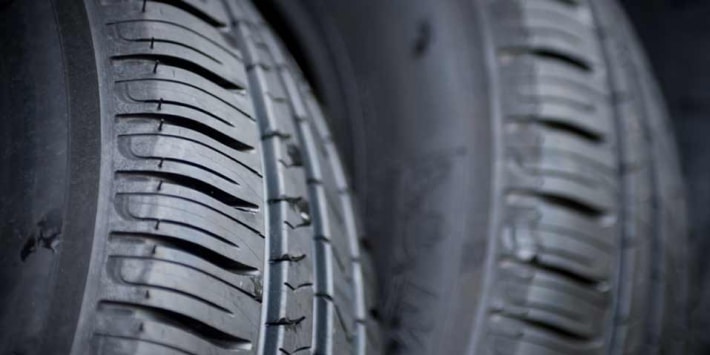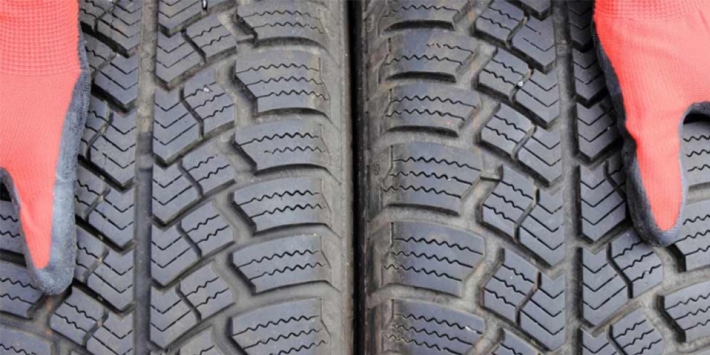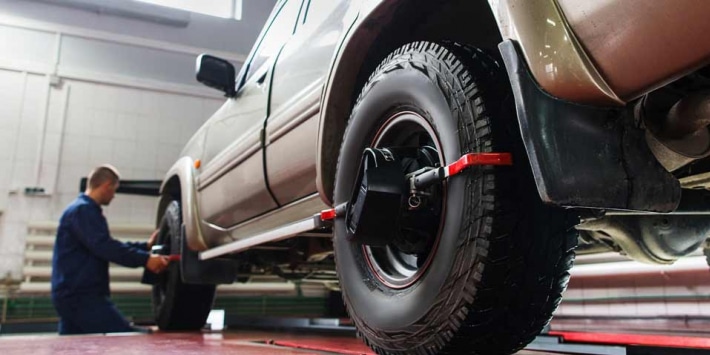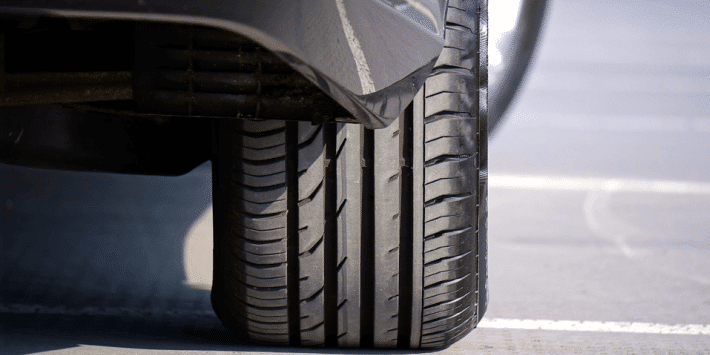Are you wondering if the condition of your tyres is normal? Do certain sections of the tread seem to be more worn than others? If so your tyres may have worn unevenly due to a fitting problem or simply an incorrect tyre pressure. Find out how to identify uneven wear and what you can do about it.
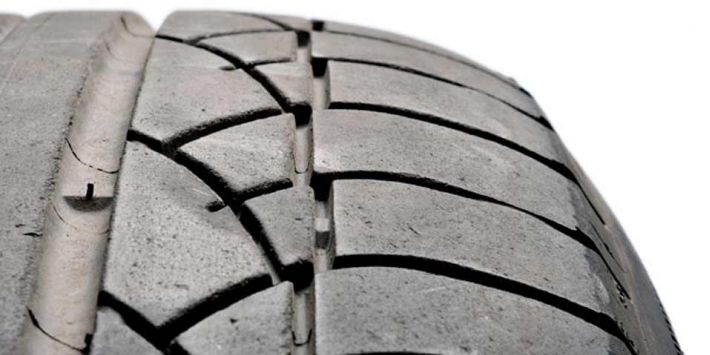
4 main types of abnormal tyre wear
Your tyre may experience uneven wear for a variety of reasons. In general, it comes from mechanical problems (alignment/tracking, balancing, suspension, transmission) or an incorrect tyre pressure (over- or under-inflated tyres), or even driving too fast which can accentuate wear.
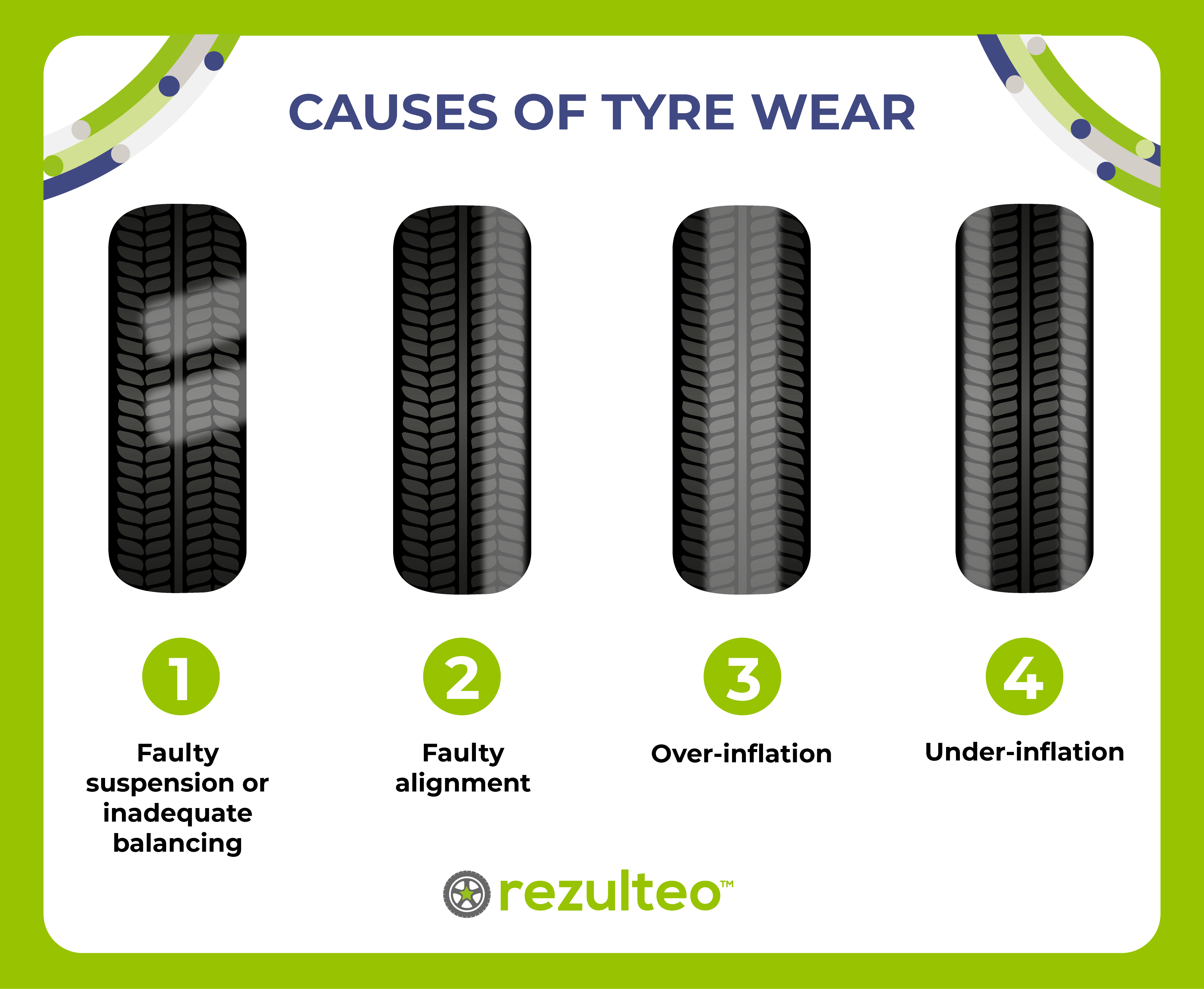
Here are the main types of abnormal wear you should be aware of:
Cupping wear
Cupping is an uneven wear pattern that is characterised by different levels of wear between different tread blocks. If your tyres start to make more and more noise when you’re driving, then cupping wear might be the culprit.
In general, this type of wear occurs on both front tyres at the same time and sometimes on the rear ones. It may be due to incorrect wheel balancing, shock absorbers in poor condition, or the specific design of your vehicle’s chassis. If you detect this type of wear, you should go to see a tyre specialist immediately.
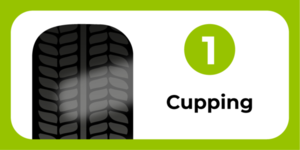
Saw-tooth wear
This type of wear is more pronounced on one side of the tyre: the closer to the outside of the tyre you get, the more the rubber is worn down.
In general, this wear problem affects two tyres on the same axle at the same time. It comes from abnormal rubbing on the road due to an alignment fault and can also be accentuated by a fast, sporty driving style. Tyres with this type of wear lose their performance, particularly in terms of grip.
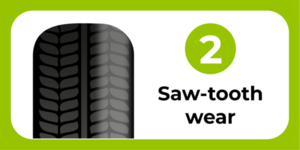
Tyre wear in the centre
When tyres wear more in the centre of the tread than on the sides, this is usually related to a tyre pressure problem. You have probably driven with over-inflated tyres for a long period. Don’t forget to check and adjust your tyre pressures once a month. If your tyres are over-inflated, they may have a negative impact on both performance and safety.
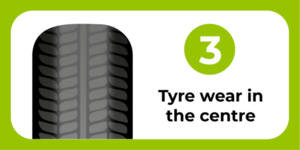
Tyre shoulder wear
Just as uneven wear in the centre of the tyre is a sign of over-inflation, tyre wear focused on the edges of the tyre often means there is an under-inflation problem. You have probably driven too long with under-inflated tyres. Again, don’t forget to check your tyre pressure once a month. Under-inflated tyres have a shorter lifespan and a higher rolling resistance, meaning you will consume excess fuel. Also, they don’t grip as well in wet conditions.
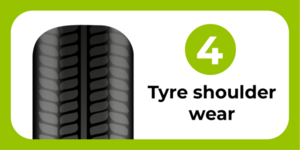
Limits of tread wear indicators
To help you assess their condition, tyres come fitted with a tread wear indicator, placed at the bottom of the main grooves. This is a 1.6 mm thick rubber bar that corresponds to the legal minimum tread depth. As soon as the thickness of the tread wears down to the level of the tread wear indicator, the time has come for you to buy new tyres.
However, it could be that your tyres need replacing sooner than expected, even before the entire tread has worn down to the level of the tread wear indicator. This is the case when uneven wear appears on certain parts of the tread.
Identifying tyre damage
Apart from these 4 main cases of wear, other anomalies may require you to change your tyres, like crazing, torn rubber, hernias or bulges. If in doubt, don’t risk it, have your tyres checked by a specialist. Driving with a worn or faulty tyre increases your risk of a puncture, aquaplaning in wet weather and loss of grip in general.

